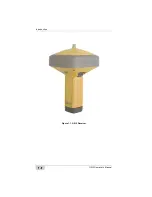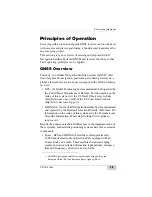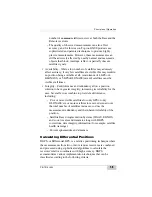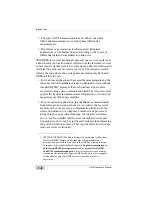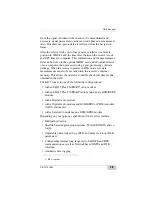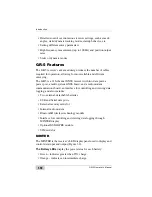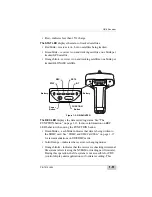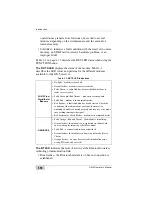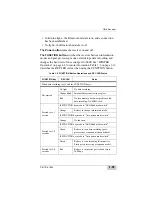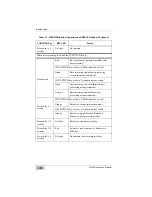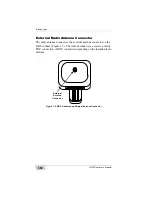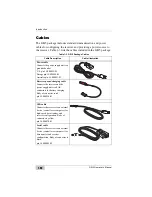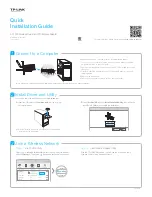
Introduction
GR-5 Operator’s Manual
1-6
• The type of GNSS measurements used, either code-phase
differential measurements or carrier-phase differential
measurements
• If real-time or post-mission results required. Real-time
applications can be further divided according to the source of
differential data and communication link used.
With DGPS in its most traditional approach, one receiver is placed at
a known surveyed location and is referred to as the reference receiver
or base station. Another receiver is placed at an unknown location and
is referred to as the remote receiver or rover. The reference station
collects the code-phase and carrier-phase measurements from each
GNSS satellite in view.
• For real-time applications, these satellite measurements and the
reference station coordinates are then combined to form industry
standard RTCM
1
messages that are broadcast to the remote
receiver(s) using a data communication link. The remote receiver
applies the transmitted measurement information to its observed
measurements of the same satellites.
• For post-mission applications, the simultaneous measurements
from reference and rover stations are recorded to the receiver's
memory card (not sent over a communication link). Later, the
data is downloaded to a computer, combined, and processed.
Using this post-processing technique, the spatially correlated
errors - such as satellite orbital errors, ionospheric errors and
tropospheric errors - can be significantly reduced, thus improving
the position solution accuracy. This is particularly true when the
remote receiver is stationary.
1. [RTCM FOOTNOTE] The Radio Technical Commission for Maritime
Services (RTCM) defines global standards for communication
messages and protocols that are used in the GNSS positioning industry.
In support of this standards-based approach,
Topcon recommends use
of the latest RTCM message formats (v3 or greater) for all RTK
and DGPS communication needs
. Several legacy correction message
formats are also provided by Topcon GNSS products in order to support
interoperability with older GNSS systems, but their use is now
deprecated.
Summary of Contents for GR-5
Page 1: ... PERATORlS ANUAL ...
Page 2: ......
Page 4: ...ECO 4074 ...
Page 9: ...Table of Contents P N 7010 1004 v WEEE Directive C 2 Appendix D Warranty Terms D 1 Index ...
Page 10: ...Table of Contents GR 5 Operator s Manual Notes vi ...
Page 16: ...Preface GR 5 Operator s Manual Notes xii ...
Page 18: ...Introduction GR 5 Operator s Manual 1 2 Figure 1 1 GR 5 Receiver ...
Page 44: ...Introduction GR 5 Operator s Manual Notes 1 28 ...
Page 99: ...Configuring the Receiver Using TRU P N 7010 1004 3 27 Figure 3 24 Add New Message ...
Page 121: ...MINTER Configuration P N 7010 1004 3 49 Figure 3 42 MINTER Tab ...
Page 122: ...GR 5 Configuration GR 5 Operator s Manual 3 50 ...
Page 170: ...Troubleshooting GR 5 Operator s Manual Notes 6 12 ...
Page 188: ...GR 5 Operator s Manual Notes A 18 ...
Page 192: ...GR 5 Operator s Manual Notes B 4 ...
Page 196: ...GR 5 Operator s Manual Notes D 2 ...
Page 201: ......











